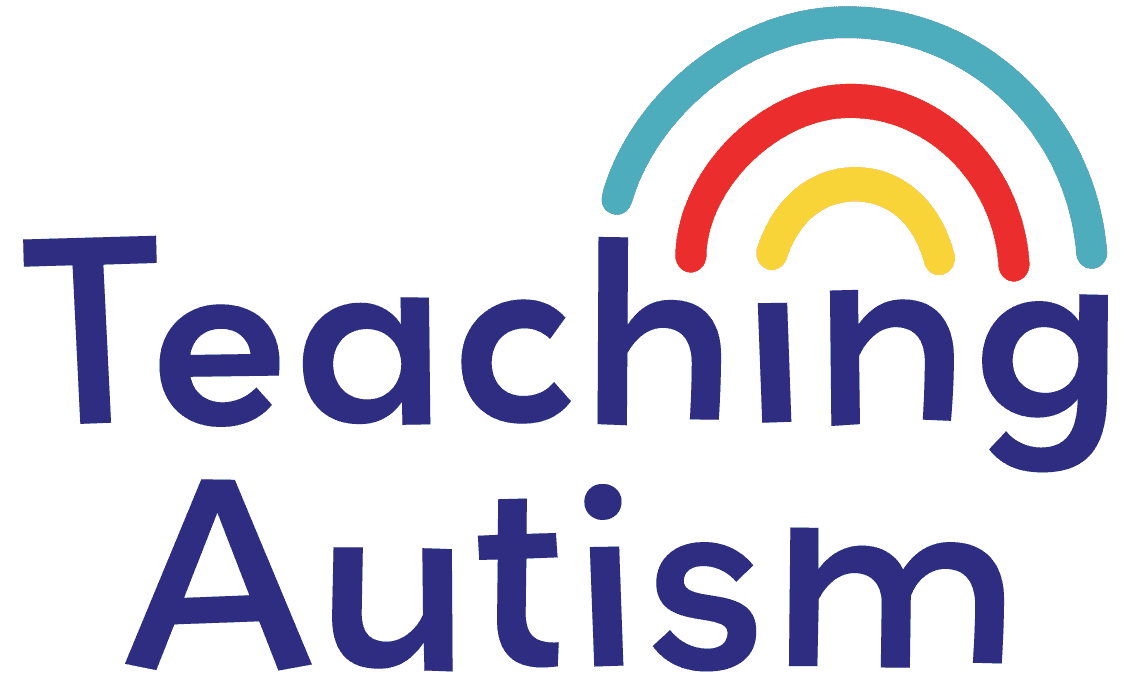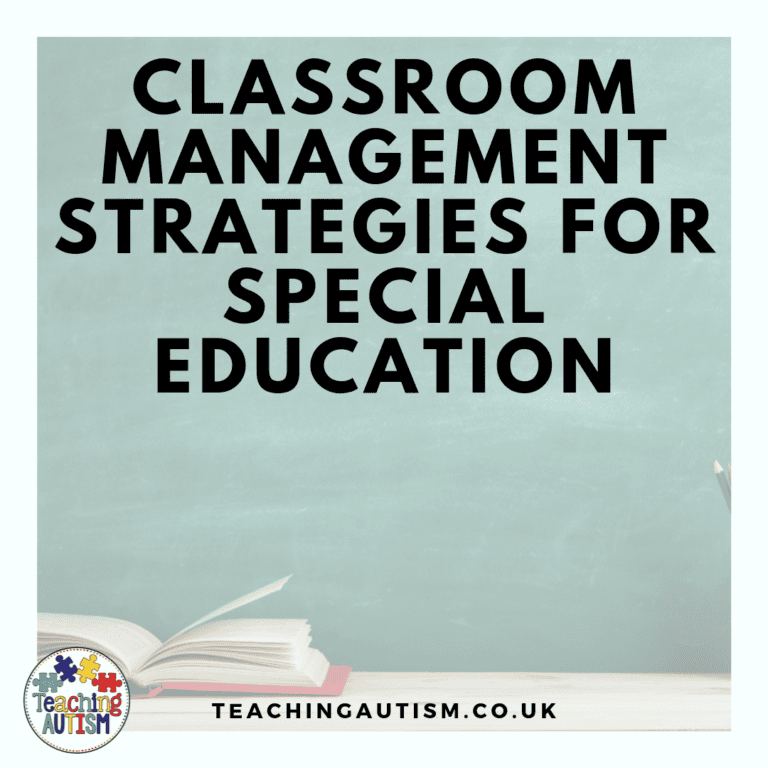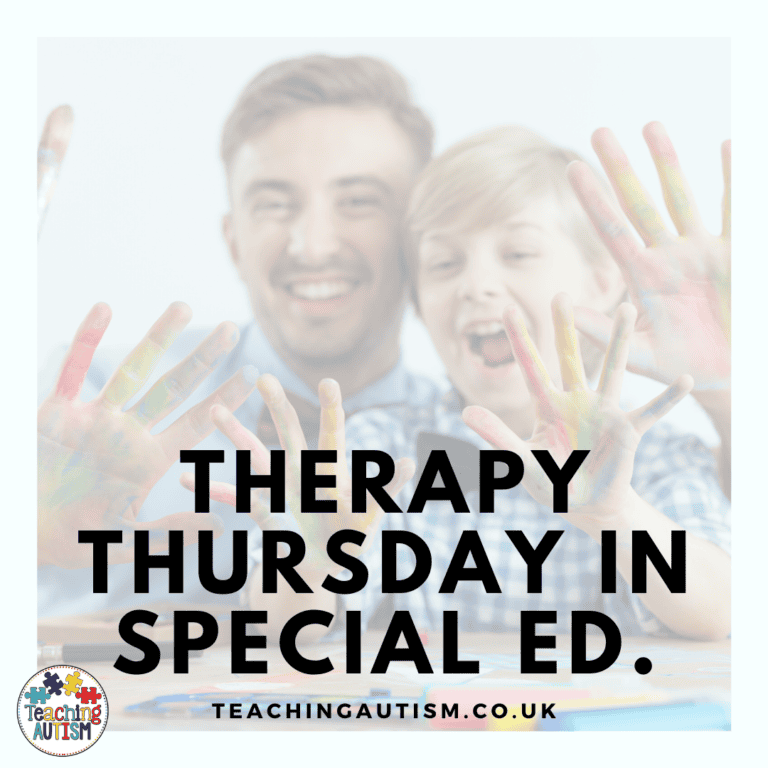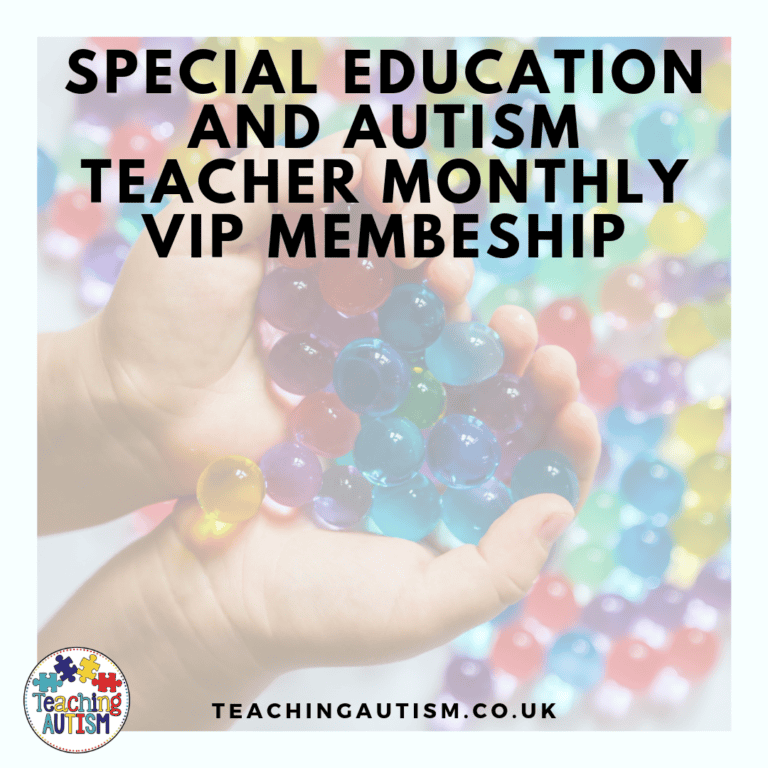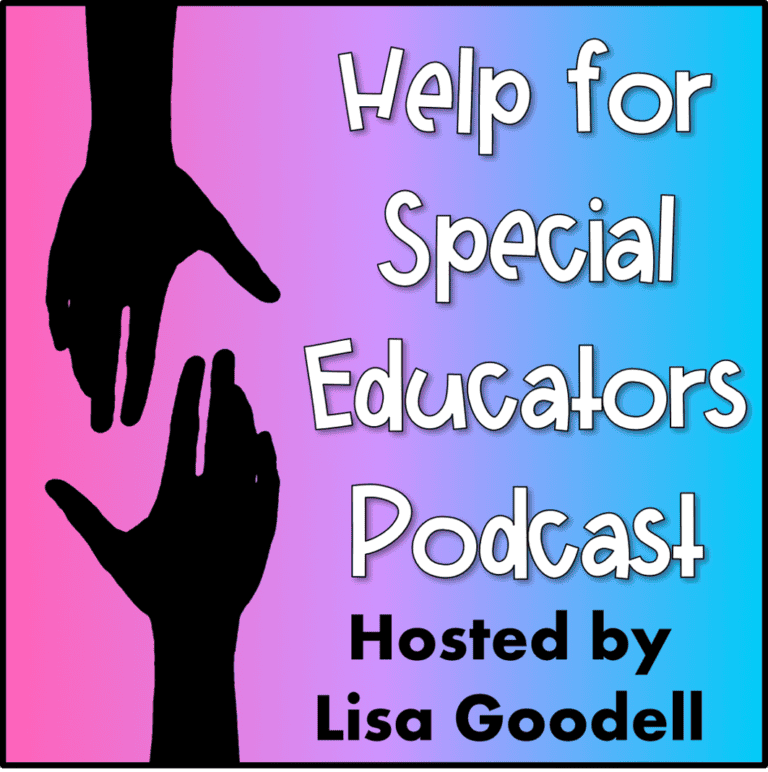Autism Morning Work Routine
Do you want to implement a successful morning work routine in your autism or special education classroom? Are you looking for ways to help your students feel comfortable and safe when they arrive in your classroom? If so, this blog post is the perfect read for you.
Why Have a Morning Work Routine?
Having a morning work routine has many benefits for your students and your classroom;
- It provides structure for your students.
- Your students will know what to expect when they arrive into your classroom.
- It’s consistent.
- Your students know what to expect.

Transition Problems
Morning transition can be a stressful time for your students. They may struggle to wake in the mornings, so they haven’t had breakfast. Or their morning has been rushed trying to get ready and out the door to school on time. They may have encountered traffic or roadworks. And this means, they may have had to redirect from their usual journey to school. All of these things can make a morning extra stressful for your students.
The main problem here, is that if your student has already had a stressful morning, on the move, and then you expect them to sit at a work desk.. it’s not going to work. You can’t expect your student to be able to sit and down and work after an already stressful morning.
Arriving at School
School arrival can look different for almost every student or school around the world. Your students may arrive by taxi, bus, walk or their parents/carers may fetch them. So this part is out of your control.
For us, most of our students arrive in a taxi or dropped off by their parents. And they are brought to our area door by their escorts/parents/carers. This allows staff to have the passover of students.
Staff will greet our students and direct them to their coat pegs. Here, they remove and hang up their backpacks and jackets. Staff can provide support if needed. We also take this time to check our students home/school communication books.
These communication books are perfect for us to use to ensure we can effectively communicate with our students families. Many of our students are also non-verbal. This communication book means that our families can ensure we know everything we need to, and vice versa.
Breakfast
Previously in this blog post, I mentioned how many of our students may struggle to get up in the mornings, and this means that sometimes there’s not time for breakfast. Or many of our students may not want to eat as soon as they wake up.
Breakfast is one of the most important meals of the day. And it’s something I do believe we need to ensure we have to learn effectively and have a successful day.
It’s for this reason, we like to have breakfast together when the students arrive. And this also provides them a no-pressure arrival.
We all sit down together – staff and students – to eat breakfast. We use our breakfast table mat – click here to find out more about our transition table mats.
Breakfast doesn’t need to be over the top. We usually offer toast and fruits. Then, each week, we introduce one extra new item of food. There’s no pressure for students to taste the new food. But staff will taste them and offer them around. This is a great opportunity for our students to experience and taste new foods.
We use colour co-ordinated plates, bowls, cups – and everything! – in our classroom. Our students have always loved to have their own colour and it’s a fantastic classroom management tool.
You can also use breakfast as a social opportunity. Offer chances for your students to interact. Pass around a question of the day and offer symbol answers for your students.
Post-Breakfast
Once our students are finished with their breakfast, they put any leftovers in the bin, and dishes into the sink. We also rotate between students to take it in turns cleaning the table and washing the dishes. Another important life skill.
Our students can also have a few minutes free choice here while everything is packed up.
Morning Greeting
Our students will be directed to sit into a semi-circle of chairs in front of the interactive whiteboard. I make an interactive PowerPoint to use as our morning greeting. And, I do get a lot of questions about this, so I’ll try and explain it as best as possible.
The interactive greeting is made interactive by my students being able to touch things on the PowerPoint to give a reaction.
The first slide of our greeting is a good morning song, and this is what plays while we wait for everyone to come and sit down to join us for greeting. It also acts as a prompt for my students so that they know it’s time for greeting.
The next slide is a good morning song – I do use this in the afternoon as well and we just change it to suit the afternoon when we coming in from dinner. For this good morning song, I make it on iMovie. I download a good morning song that I like and then I insert photographs that we’ve taken in class or out on field trips of the students. This way the students can look at everything that we’ve been doing this year so far.
Once this has finished, our next slide is our attendance check in. There’s a photograph of each of my students and their name. My students go up and touch their photo, encouraging them to recognise themselves, and then it pops up to say ‘Michaela is in today” and so on. This helps them recognise their name as well. If a student is off, we can say “Oh no, Ben isn’t here today!” and this helps my students to look around them and start connecting and recognising their classmates.
After this slide we have a counting video that I download, usually from Youtube.
After this slide, it’s time to count. So I’ll nominate a different student to stand up, walk around our semi circle and count how many students are here – and then select this number on the board. This gets my students moving, working on their counting skills and being able to connect this with a number.
After this slide we have a days of the week video.
After that, we have a slide with the different days of the week. I nominate a student to go up and choose which day it is. They click the day and then that night goes larger and it says ‘Today is Monday’ or ‘Today is Tuesday’ so again, we’re working on recognisnig what day it is.
The next slide contains a months of the year video. And after that slide we have different months of the year – and I nominate a student to choose which month of the year it is. We don’t include the 12 months here, I typically include 2-3 options for months until my students are more experienced with this and then I’ll start to introduce more.
The next slide is a weather song video. And there’s so many fun weather songs that you get from Youtube.
After this slide, you can probably guess what’s coming. We have a what’s the weather slide. And it has different weather on here for students to choose from. I nominate a student, encourage them to look outside and then they choose how the weather is on the interactive white board. Again, the weather they choose goes bigger and it says ‘It’s raining’ or ‘It’s snowing’
The next slide contains a feelings song video -all about the different types of feelings.
Our next slide contains a students face in the top left corner – this is their slide – and some feelings for them to choose from. For example, happy, sad, angry and tired. They choose which one they are feeling, and the next side contains the next student.
I did it this way because my students have to pay attention and wait for their turn. They need to look for their face and name to recognise when it’s their turn. And then, we are working on them recognising their feelings.
The final slide is a motivating slide. We usually have ‘have a nice day’ playing on there as a song and then some fun and motivating gifs like Spongebob jumping up and down.
Once this is finished, my students go and have 5 minutes choice. So, theres typically more students in a class for us than staff members, which is why I mix up the next part of our routine.
Individual Work Stations
The next part of our morning work routine takes place at our individual work stations. Each member of staff will work on a 1-1 basis with each students. The students who remain can have choice with a member of staff watching over them. We rotate through staff doing this so that everyone gets a chance to work on a different role.
On our work stations, I have the morning work in a scrapbook container that you can get from craft stores. It typically contains a first and then board, a small visual timeline containing the different work that they will do, a reward chart or system, a morning work binder, an adapted book, a task box activity and a worksheet or something for them to work on. Now this does generally change each week and for each student depending what skills and targets we are working on with them, but this is the general idea.
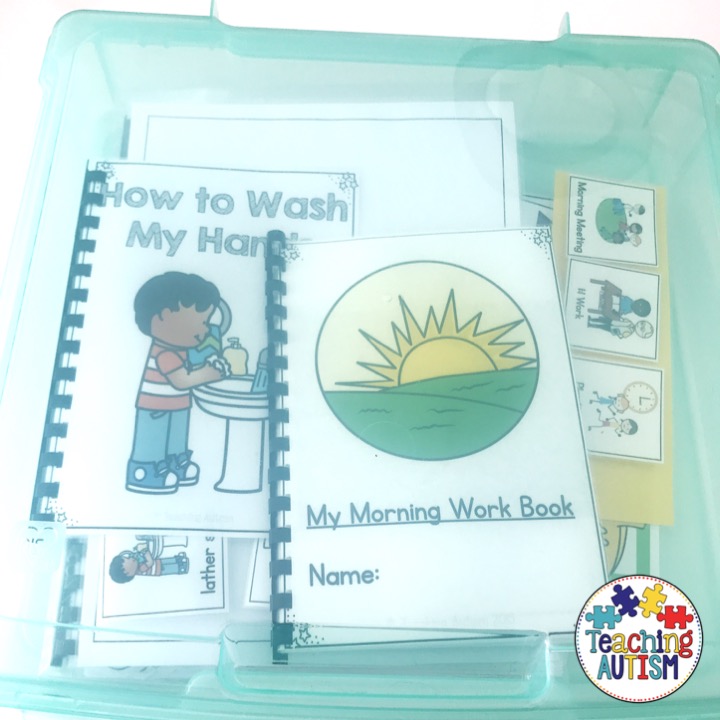
This container is prepared the night before so that it’s readily prepared for my students when they go to work. This is put on the left side of the desk with ‘start’ above it. On the right side of the desk is an empty scrapbook container with ‘finished’ on it.
The work in the start box is the work that the student needs to complete. When they’ve completed an activity, they put it into the finished container. This helps them see, along with the visual timeline, how much work they have left to do.
The morning work binder is an adapted book version of our interactive greeting.
The first page is ‘Who Am I?’ and there’s an image and name of the student. Now, we all have students of different abilities in our classrooms and it’s for this reason that this is differentiated for each of my students. So one student may have a cut out of their photo and a cut out of their name and they place these onto the page. Others may have their photo cut into 4 pieces like a jigsaw and they have to put them together to form the image. Their name may be split up in half or into individual letters for them to spell. Or they may be writing their name underneath. There’s so many ways to adapt it to suit your students needs and it’s so easy to do.
Our second page is where do they live. And we have a picture of their home and their address – and again you can differentiate this like we did with their photo and name.
The next page is about school, what school do you go to? And again we have a photograph of the school and the school name. Once more – you can easily differentiate this for your students levels too.
Our next page is what day is it – and they choose the symbol for what day it is and add it here.
Then, we have the month and how the weather is.
And then, we have how do they feel – and the student chooses a feeling for how they feel.
Then we move onto our other work tasks in our scrapbook box.
Once this is done, the students who were working can go and have choice, and the students who had choice come and do their work.
We’ll refer to the visual timeline throughout the work activity and our reward systems. This helps to keep the students motivated and on task.
Once all the students have finished their work tasks and had choice, that’s when we’ll move into our other lessons for the day.
But, that is an overview of what our initial morning routine looks like. Sometimes things can change slightly. We have whole school assembly twice a week. When this happens, we’ll have breakfast, our interactive greeting, then assembly, then after assembly we come back and continue our usual morning routine.
I find that my students tend to work much better in the mornings, by the afternoon they tend to lose focus a little easier or they’re getting worn out. So I like to have that structured morning routine for us to work on those skills while the students are fresh and ready to learn.
If you have students who struggle to sit for periods of time, I’ll often include a movement break or two into the morning work routine. So once they complete their morning binder, I’ll pull out a movement break flashcard like star jumps and we’ll do that before moving onto the next activity.
If you found this blog post helpful, please consider sharing it with your friends and colleagues.

